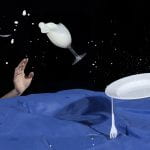constructing the mundane object
‘To see something spectacular and recognise it as a photographic possibility is not making a very big leap. But to see something ordinary, something you’d see every day, and recognise it as a photographic possibility – that’s what I’m interested in’ (Shore in O’ Hagan, 2015)

This is an adaptable session in which participants will explore the idea that through photographic construction, ordinary objects can be made extraordinary by making a scene and photographing it. It encourages participants to ‘think’ about these ordinary objects and gives a freedom to explore potential new uses of these. Participants are encouraged to explore aesthetics, lighting, framing, vantage point and depth of field, and investigate the idea of the ordinary being seen in a ‘new way’.
This Session could be run in conjunction with:
‘An ordinary object can be elevated to the dignity of a work of art by the mere choice of an artist’ (Duchamp in Obalk, 2000)
Aims & Outcomes:
- For participants to explore the nature of the constructed image
- For participants to work in groups to investigate different ways of ‘seeing’ a single ordinary object
- To produce 5 (edited) constructed images which demonstrate different ways of ‘seeing’ this object
- *This session works best when participants are in groups. Studio and location lighting may be introduced.
- Participant Outcome: 5 x 6×4 edited Final prints
Research: Ordinary Magazine

Ordinary magazine: Issue #6 Air: Air is the general name for the mixture of gases that makes up the Earth’s atmosphere. It is the clear gas in which living things live and breathe. It has an indefinite shape and volume. It has no colour or smell. Air is a mixture of about 78% nitrogen, 21% oxygen, 0.9% argon, 0.04% carbon dioxide, and very small amounts of other gases. There is an average of about 1% water vapour.
See the full images from Ordinary Magazine Air here
You will need:
- Digital cameras for all participants (and appropriate memory cards)
- Card readers
- Access to computers (or laptops)
- An introductory brief & Presentation (above / Ordinary Magazine) for participants to outline the ideas and provide examples
- A booked room to critique participants work (either via projector or print)
- Blu-tack if you are pinning up physical prints
- Costings and Risk Assessments

Preparation work:
- Ask participants to watch the Ordinary Magazine presentation of plastic cutlery which can be found here
- Ask participants to bring along 3 ordinary objects to the session *Or you can bring / devise your own.
- Ask participants if they have their own digital cameras and cards
- Make sure you have access to computers * Decide whether you plan to project the work or print it

Suggested Session Outline:





